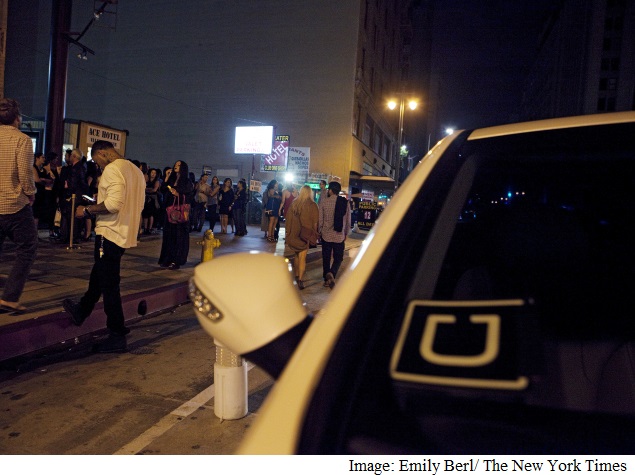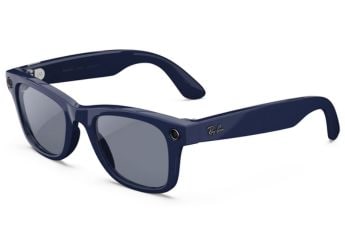- Home
- Apps
- Apps Features
- Distracted Driving and the Risks of Ride Hailing Services Like Uber
Distracted Driving and the Risks of Ride-Hailing Services Like Uber

But a growing number of drivers who make their living behind the wheel can't wait. These are the drivers for Uber and its competitors, including taxi services, who, to make money, must respond nearly instantly to their smartphones, without regard to road conditions or safety.
When a service call comes in from Uber - by way of a loud beeping on the phone - a driver typically has 15 seconds to tap the phone to accept the fare. That can mean looking at the phone, seeing how far away the customer is and then making a decision. Failure to respond in 15 seconds means the fare goes to a different driver. In some cities, including New York, failure to respond to several calls in a row can lead to Uber's temporarily suspending a driver.
You need not be a neuroscientist or safety advocate to see the potential for danger when the phone, a potential source of driver distraction, becomes an essential means of transaction. But Uber is not alone, given that a similar system is used by Lyft and, arguably, an even more demanding one is used by a growing number of taxi drivers.
In San Francisco, the home of Uber and the hub of car-service innovation, taxi drivers use software called Flywheel that aims to allow competition against Uber. It works like this: When a customer calls for a taxi, a message goes out to a handful of cabs nearest the customer; the fastest to touch the Flywheel phone app in response gets the fare.
If no one responds within 20 seconds, the call goes out to another set of drivers. Think of hitting a game show buzzer, but perhaps while winding through dense urban traffic, with fog or rain and cyclists and pedestrians.
Scholars and policymakers who study driver distraction say the system puts drivers in a tough spot: answer or lose money.
"It's conditioned. You get a ding, you respond, you get a ride, you get money, you get paid," said Deborah Hersman, chief executive of the National Safety Council, a nonprofit, and former chairwoman of the National Transportation Safety Board, a federal agency. Responding to the device takes visual, manual and cognitive attention, she said. "There's not a whole lot of debate this is distracting."
Risk aside, Uber's popularity is no accident. Old-school waiting for a taxi stinks. The answer, a gift of technology, is a button push by a customer, delivered instantly to a server and then a nearby driver - and see you later to all that lonely waiting on a corner and hailing a taxi.
But even some in the industry say there is reason for pause.
I asked the chief executive of Flywheel, Rakesh Mathur, whether this demand for instant attention by drivers could be a safety hazard. He said, "I do see your point."
He added: "We've got to come up with things that are safer," like voice activated technology.
He also said there had been no problems he knew of related to taxi drivers' use of Flywheel. And there have not been widespread reports of accidents caused by Uber drivers. They express mixed reactions to the technology, some saying they can handle it just fine, while others say the 15-second time limit offers little time to pull over and reflect: Do I want this fare? Should I drive to that part of town?
Uber provided me with a statement that its app "was designed with safety in mind," and that drivers do not have to look at the device to accept a fare but can respond to the audible tone by touching anyplace on the screen. Lyft, a competitor, said, "Safety is our top priority" and drivers are urged to use "hands-free navigation, a phone mount and safe-driving practices."
This month, misdemeanor vehicular manslaughter charges were filed against an Uber driver, Syed Muzaffar, who hit and killed a 6-year-old girl in a San Francisco crosswalk last New Year's Eve. It is a matter of dispute whether Muzaffar was using his Uber software at the time of the accident.
Two lawsuits, one filed against Uber and another against Lyft, contend the services are negligent by violating California's law against driver use of hand-held electronic devices. The lawsuit against Uber, a wrongful death complaint filed in connection with the death of 6-year-old Sofia Liu, claims that the Uber technology is "inherently dangerous," said Chris Dolan, lawyer for the family, which filed the suit.
"We're sacrificing safety for instant gratification," he said, adding that the mother says that she saw Muzaffar using his phone.
John Hamasaki, Muzaffar's lawyer, said his client was not using his phone at the time of the accident. Hamasaki said Muzaffar had not yet entered a plea to the manslaughter charges. The maximum sentence he faces is one year in county jail.
The office of the California attorney general declined, as a matter of policy, to give a legal interpretation about whether the technology violates the law.
But former state Sen. Joe Simitian, who wrote the original 2008 legislation to ban talking or texting without a hands-free device (it has since been slightly amended), said a case could be made that requiring drivers to read information and respond to it manually using a phone could qualify as a violation. Legal interpretation aside, the demand for quick driver attention to a device is "an invitation to disaster," said Simitian, now a supervisor in Santa Clara County.
Abdoulrahime Diallo, a driver in New York and an organizer of the Uber Drivers Network, a group that he said had 2,500 members, said that the app had never been "personally difficult for him" because "it's just a matter of pressing and accepting it and seeing where the fare is."
At the same time, he said, "It can be distracting if you are driving and you have to look at the phone." He added that Uber made it hard to resist because drivers can be penalized with temporary suspensions for ignoring or declining calls.
There is some logic to that, he said, in that he understands the policy to be that "if you're online you should be willing to accept" fares.
But David Bruder, 36, a part-time Uber driver in the Palm Springs area of California, said that while he had not had any distraction problems, he would prefer to be given more time. Maybe 25 seconds, he said. Even "an extra five seconds would be great," he added. "I don't think five seconds for a passenger is going to make all that big of a difference."
In essence, he is saying, five seconds can make all the difference in the world when you have to look down at your phone in traffic. The passengers? Well, they can wait.
© 2014 New York Times News Service
Catch the latest from the Consumer Electronics Show on Gadgets 360, at our CES 2026 hub.
Related Stories
- Samsung Galaxy Unpacked 2025
- ChatGPT
- Redmi Note 14 Pro+
- iPhone 16
- Apple Vision Pro
- Oneplus 12
- OnePlus Nord CE 3 Lite 5G
- iPhone 13
- Xiaomi 14 Pro
- Oppo Find N3
- Tecno Spark Go (2023)
- Realme V30
- Best Phones Under 25000
- Samsung Galaxy S24 Series
- Cryptocurrency
- iQoo 12
- Samsung Galaxy S24 Ultra
- Giottus
- Samsung Galaxy Z Flip 5
- Apple 'Scary Fast'
- Housefull 5
- GoPro Hero 12 Black Review
- Invincible Season 2
- JioGlass
- HD Ready TV
- Laptop Under 50000
- Smartwatch Under 10000
- Latest Mobile Phones
- Compare Phones
- Honor Win RT
- Honor Win
- Xiaomi 17 Ultra Leica Edition
- Xiaomi 17 Ultra
- Huawei Nova 15
- Huawei Nova 15 Pro
- Huawei Nova 15 Ultra
- OnePlus 15R
- Asus ProArt P16
- MacBook Pro 14-inch (M5, 2025)
- OPPO Pad Air 5
- Huawei MatePad 11.5 (2026)
- Xiaomi Watch 5
- Huawei Watch 10th Anniversary Edition
- Acerpure Nitro Z Series 100-inch QLED TV
- Samsung 43 Inch LED Ultra HD (4K) Smart TV (UA43UE81AFULXL)
- Asus ROG Ally
- Nintendo Switch Lite
- Haier 1.6 Ton 5 Star Inverter Split AC (HSU19G-MZAID5BN-INV)
- Haier 1.6 Ton 5 Star Inverter Split AC (HSU19G-MZAIM5BN-INV)

















